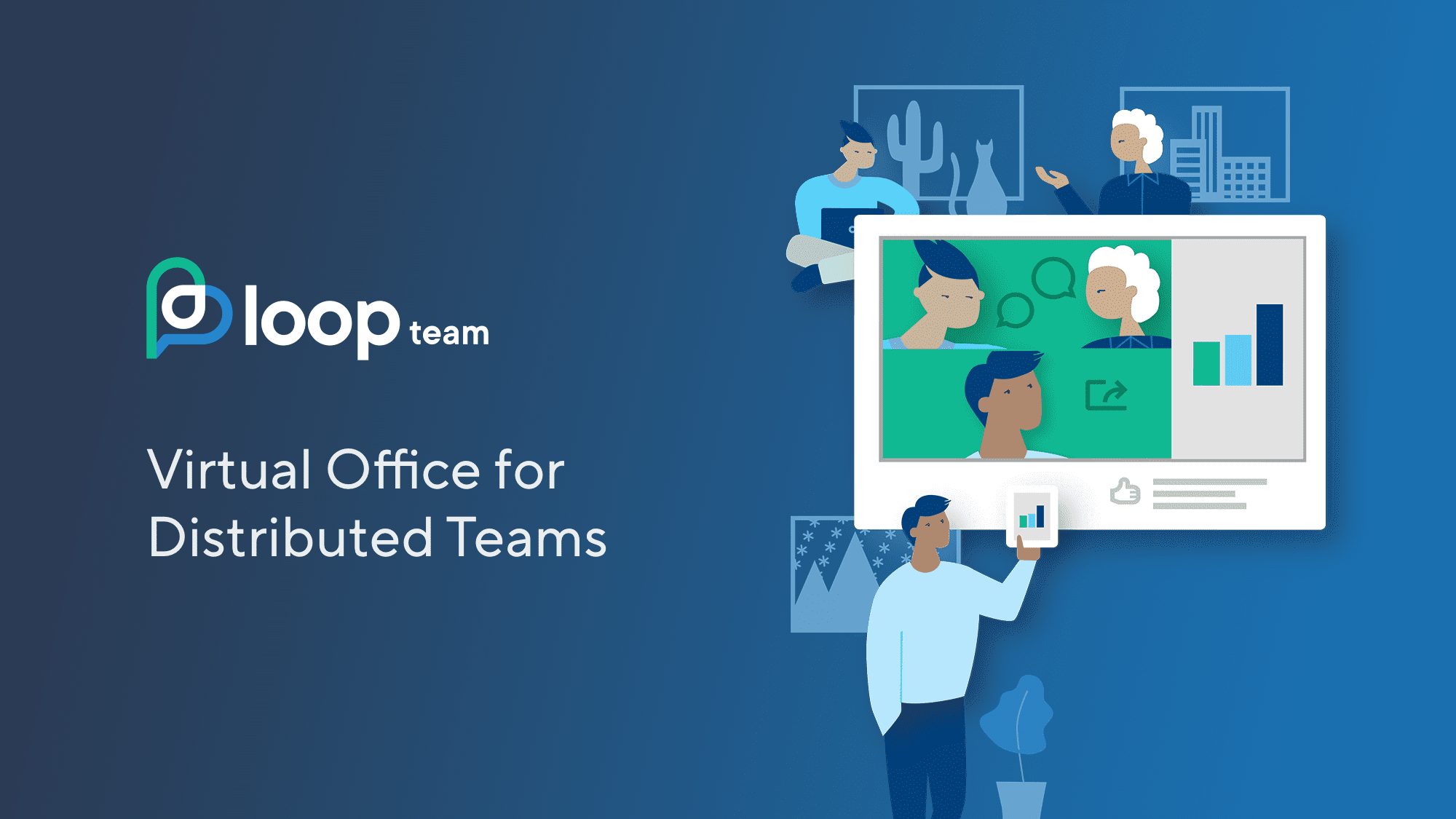
In recent weeks, most organizations have been scrambling to keep employees safe and productive during the COVID-19 pandemic. The challenge for most companies, especially those with no previous remote presence, is finding ways to keep newly distributed teams collaborating and engaged at the same cadence as they were in the office. Loop Team provides a solution with its Artificial Intelligence (AI)-assisted virtual office that brings the best parts of working together in a physical environment to a virtual workspace.
Online presence
Spun out of SRI international, Loop Team allows remote team members to know who’s around and available; who’s meeting and engaged in discussions; who’s in deep focused work; and what type of work and discussions are in progress — just like in a real office. Akin to a shoulder-tap, anyone can start an instant conversation during their workday. The experience is like being in the same office where spontaneous conversations and ad-hoc “water cooler” interactions happen. It’s these discussions that foster creativity, create camaraderie, and help team members feel connected and engaged.
“Distributed and remote work has been accelerating in recent years, and now with COVID-19 and mandatory work from home, remote work has skyrocketed resulting in a massive demand for tools that address the way we communicate, collaborate, and meet together,” says Raj Singh, Co-Founder and CEO of Loop Team. “For example, data shows that employees who work virtually feel lonely, disconnected and struggle with work/life balance. Loop Team attempts to meet these gaps by creating a sense of liveliness during your day via the presentation of a virtual office while also creating empathy and being respectful of team members’ work hours and time zones.”
The secret sauce
While there are a number of formal conferencing tools currently available, Loop Team is reimagining the experience for the distributed team member. Existing conferencing experiences are more like utilities in that they are typically used for formal, scheduled and external meetings, such as sales or customer support. Loop Team is focused on internal communications; your team and the conversations that occur in-between your formal meetings. These informal ad-hoc interactions foster spontaneous collaboration amongst team members which are core to morale, creativity and rapid problem solving. Without Loop Team, team members will be relegated to text chat and email meaning discussions may take hours instead of minutes.
Staying in the Loop
Beyond instant communication and team presence, Loop Team takes this even further.
In the office, spontaneous discussions happen because team members overhear discussions, bump into each other in hallways, ping-pong rooms or other. Much of this chat is lost when remote. To drive more serendipitous conversation, Loop Team applies AI, such as text analytics and NLP that was built in conjunction with SRI to display real-time summaries of active virtual conversations. Such summaries may indicate that your team members are talking about product onboarding and that’s a topic of interest so you should jump in or it may be a more casual discussion, but in either case, it provides necessary context that you get in in real life but not in a distributed team.
After the discussion is over, these summaries can be published for others to consume, especially those team members who are unable to partake due to schedules and time zones. A perfect example would be a brief, but important, virtual discussion between two engineers working on a critical project with 5 other team members. The first engineer uses Loop Team to instantly connect to another team member currently working 500 miles away. The engineer can now discuss an idea and get immediate feedback. The conversation only lasts 5 minutes, but the most important points are highlighted and contextualized. Those highlights are then published for other team members to consume asynchronously, ensuring they receive relevant information they may have missed while offline, asleep or traveling.
The future of work
COVID-19 has substantially accelerated the remote work trend. Companies are now evaluating multiple tools and best practices to better facilitate collaboration and improve employee happiness. In addition, companies are discovering that many team members are enjoying working remotely as they can save commute time, have more flexibility and still be productive. And for the company, if the same productivity and happiness can be achieved, it provides an opportunity to save on expenses that incur with office space, making this a win/win.
While many teams will return to offices after the pandemic subsides, many will continue working remote with new tools. Virtual offices like Loop Team, that make team members feel more connected will be critical at enabling this transition.



